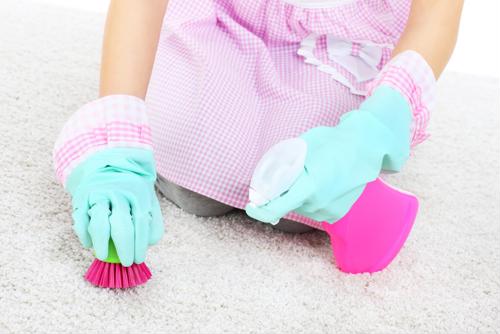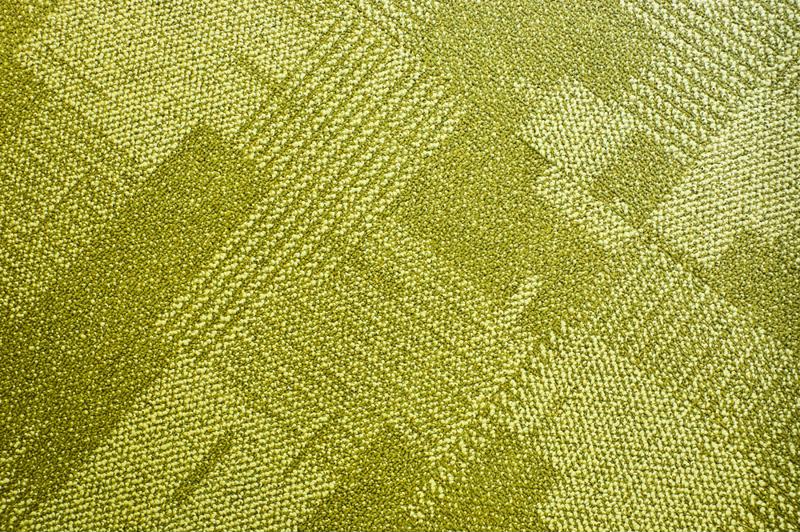- Home
- Resources
- Amerhart Insider Blog
- Construction & Design Trends
- Wall-to-wall carpeting: is it worth it?
Wall-to-wall carpeting: is it worth it?

When performing home remodeling or renovations, it's not uncommon for clients to ask for new floors. Right now, hardwood and similar substances are all the rage. They're easy to maintain, resist spills and stains, and can be easily complimented by rugs or other inserts.
However, carpeting as a flooring method remains popular among many clients. As with any building material, carpeted floors have their own strengths and weaknesses, and it is important for you to educate your clients as to what these are. Not every room in the house should be carpeted, no matter the budget or location.
Here are tips regarding wall-to-wall floor carpeting that you can pass on to your clientele:
The pros of carpeting
First off, let's highlight the positives. Edwards Carpet stated the obvious: floor carpeting feels good on the feet, especially when they're bare. It also can reduce injury, should the owner trip and fall. Banging a knee into carpeting feels a lot more comfortable than smashing down onto stone. Clients with elderly relatives or small children may find this information useful.
Secondly, wall-to-wall carpeting is warm in more ways than one. According to Edwards Carpet, the material retains temperature better than alternative flooring substances, keeping it warmer in the winter time. The overall appearance of carpeting, which always looks soft no matter the color, can raise the welcoming atmosphere that a space is trying to convey. For families renovating in areas with cold winters, carpeting poses an advantage.
You may want to discuss carpeting with clients on properties with large basements or other open spaces beneath commonly traveled rooms. In winter, floors with clear areas underneath them can become frigid, freezing any unclothed foot unfortunate enough to touch them.
Carpeting comes in many color varieties as well, making it a material to consider for clients with very particular home decoration needs. It can be tailored to match furniture, curtains, and other furnishings.
For those clients with a budget, carpeting is an affordable alternative to other flooring materials.
The cons of carpeting
While wall-to-wall carpeting has strengths, it unfortunately has noticeable weaknesses. As Architecture Art and Design pointed out, stains and spills tend to stick on carpets. While carpeting can be treated to resist stains, this is not a complete solution. Stain resistant does not mean stain proof, as All Kleen Carpets reported. Even with the extra money spent on this new technology, clients may find their floor damaged in a way that cannot be easily repaired.
And stains are not the only way that the material deteriorates. Rooms with heavy foot traffic can wear down the fabric on floor carpeting, exposing hard and ugly underside that cannot be replaced without redoing all of the floor.
Unlike other materials, carpeting can rarely be done in segments. It is usually an all-or-nothing component, which greatly increases its maintenance costs. Clients with a budget who are intrigued by the initial price tag should know what they're potentially getting into.
In addition, floor carpeting can easily turn into a breeding space for dust mites and other parasites if not properly maintained. Clients with allergies or asthma may want to avoid the material as it retains dust more than other flooring methods.
 Carpeting can also fray at the edges, especially if not properly installed by you or another professional.
Carpeting can also fray at the edges, especially if not properly installed by you or another professional.
Where to use carpeting vs. other floor substances
So, where does wall-to-wall carpeting make sense? For one, expecting parents may want to use it for the baby's room. The soft surface reduces the risk of injury and may make the child feel more comfortable. That said, clients shouldn't expect this to be a long-term solution. Carpeting in a child's room likely won't last and, even if it does, the dust may be more than what they want to subject an infant to.
Other rooms include furnished basements, which can be cold and uninviting. Clients may also want to consider it for bedrooms, which tend not to see a lot of foot traffic or food.
Rooms that should never be carpeted
Carpeting and family living spaces just don't mix for a long-term solution. Foot traffic, food, pets, and many other factors come together to wear down the substance. Clients that opt for this solution should expect to replace the material within a decade or so.
However, the absolute last room in a house that should be carpeted is the kitchen. Not only would this choice bring more dust but clients would be asking for new stains on perhaps a weekly or monthly basis. Even the most stain resistant carpeting likely could not remain unblemished for more than a year.
The material can also pose a safety hazard anywhere close to heat sources, including stoves, fireplaces, and heaters. Carpeting is a suitable flooring material with its unique set of advantages and disadvantages. Overall, however, Amerhart recommends convincing your clients to use hardwood flooring and other, similar materials, which will allow you to give your clients classy, enduring homes.


















